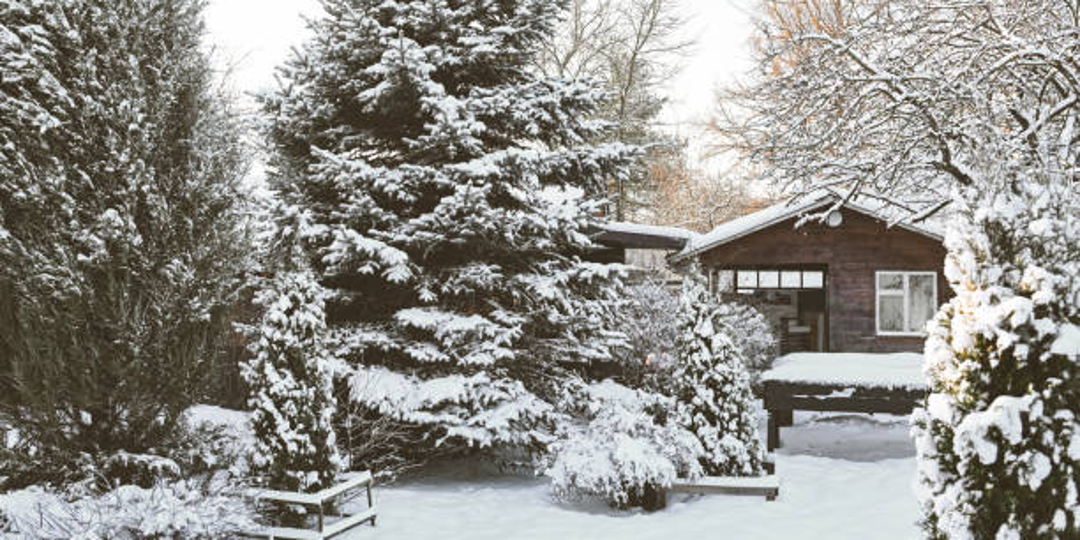Fall is a critically important time to schedule tree care to protect your evergreen trees from the effects of winter cold and keep them healthy and green throughout the winter season.
Evergreens are beautiful elements providing much needed color to a winter landscape, but subfreezing winter temperatures can put your evergreen trees and shrubs at risk. Unlike deciduous trees that lose their leaves in the dormant season, evergreens keep their foliage through the winter and are more prone to moisture loss through their leaves and needles due to a process called transpiration. In seasons of warmer weather this is offset when roots are actively taking up water in soil; but when cold winter temperatures cause the ground to freeze, water becomes unavailable to plant roots while transpiration is still occurring, and evergreen foliage is losing moisture. As a result, evergreen trees and shrubs can experience a net loss of water which may cause their leaves or needles to wilt or experience winter burn. This can damage their appearance, cause significant stress, and even kill them.
Before winter arrives, there are a number of things you can do in the fall to bolster your evergreen trees’ health so that they will be more resilient to the potential threats of winter injury.
Prior to the arrival of freezing temperatures, adequate fall watering is critical to keeping plants healthy and increasing resilience so that they will be better able to handle the oncoming stresses of winter. Fall soil treatments can contribute organic matter and nutrient compounds that help improve and maintain soil porosity as well as increase microbial activity, so that water and nutrients are better able to infiltrate into soil and remain available for longer periods prior to winter freezes. Fall soil treatments also promote root development so that trees will develop strong extensive root systems that will help them absorb more water and nutrients and better prepare for the stresses of the winter months. In areas of extreme cold, additional foliar treatments with anti-desiccants can also slow transpiration and curb moisture loss.
Proper fall mulching is another great way to help your evergreen trees stay healthy through the winter season.
Mulching can provide numerous benefits to trees and shrubs to keep them healthy during the winter months. When applied correctly, a 2–3-inch mulch layer can buffer soil and tree roots from subfreezing temperatures, delaying or preventing ground freezes which reduces stress factors on plants and extends water and nutrient uptake periods. Mulch also adds a protective layer on top of soil which helps retain soil moisture for longer periods to prevent it from drying out. It also contributes additional organic matter to soil which then improves soil structure that will allow the soil to hold onto and retain more water. Organic matter breaks down to feed soil microbes which in turn make more water and nutrients available to keep plants healthy and less stressed through the winter months. On top of that, mulch also has an additional benefit of moderating fluctuating temperatures that can occur in winter, especially on sunny days, and it can protect soil and plant roots from salt injury that can occur in the winter season.
Schedule early to give your evergreens more time to prepare for the coming winter season!
As is the case with facing many challenges, preparedness is key; and in the case of winter protection, the more time you give your plants to respond to treatments, the better chance they will have of success and thriving through the coming winter months. Call your Monster Certified Arborist today to schedule a winter health treatment plan and enjoy the beauty of your evergreens staying green - and healthy - through the winter season!

